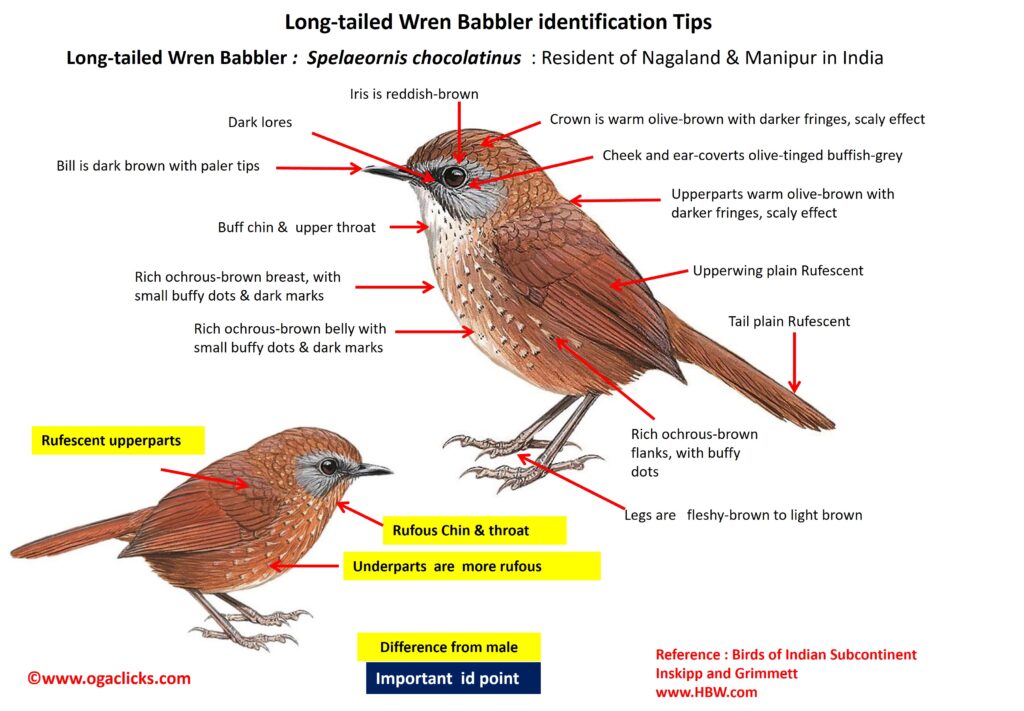
Long-tailed Wren Babbler / Naga Wren-babbler Spelaeornis chocolatinus
Etymology:
- Spelaeornis: Greek word spelaion- cave; ornis – bird { Cave dwelling bird}
- Chocolatinus: Latin Word Chocolate brown coloured
Vernacular Name: Naga: Tinglin-rui-gadeba
Distribution in India: Resident of Nagaland and Manipur.
Description: Size of 10 cm; Weight of 11–15 g. It is a small dark wren-babbler with strong buffy streaks on brownish flanks. The male is slightly warm olive-brown crown to rump with darker fringes (vague scaly effect), plain upperwing and medium-length tail slightly more rufescent. The lores and ear-coverts are olive-tinged buffish-grey, chin is pale buffy, shading to rich ochrous-brown on breast, flanks and belly with small buffy dots and dark marks .The flanks are broad-ended buffy shaft streaks, mid-belly is flecked with white. The iris is reddish-brown; bill is dark brown with paler tip. The legs are fleshy-brown to light brown. The female is more rufescent above and below.
Habitat: It Inhabits montane broadleaf evergreen forest with undergrowth of bracken, ferns or steep hillsides broken with rocks and large boulders covered with rich vegetation and green moss, and thick low bushes, briars and dwarf bamboo, at edge of evergreen forest and in clearings; often in dense undergrowth near water. It is found at elevations of 1200–3100 m.
Food habits: It eats small invertebrates, ants, small beetles. It forages in dense herbage, moving through foliage.
Breeding habits: They breed in May. The nest is a deep cup with long back wall, made of leaf skeletons bound together with dark, coarse fern roots, grass bents, and fine elastic twigs, lined with leaf skeletons. The nest is placed on pile of dead leaves, twigs and branches under fallen log. They lay a clutch of 3 eggs.